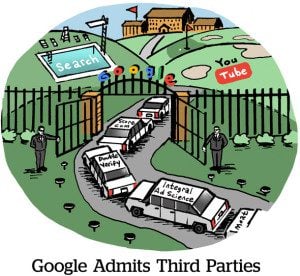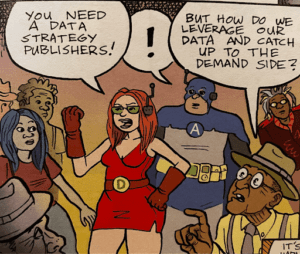 Six out of 10 marketers would reallocate their media spend if digital media owners failed to supply sufficient third-party measurement, according to new findings from the Association of National Advertisers (ANA).
Six out of 10 marketers would reallocate their media spend if digital media owners failed to supply sufficient third-party measurement, according to new findings from the Association of National Advertisers (ANA).
In an ANA survey of 154 members conducted this summer, 90% of marketer respondents also said they are “not fully confident” that their working media meets digital viewability requirements set forth by bodies such as the Media Rating Council (MRC).
One of the battle cries among marketers of late is the need for third-party measurement independent of media ownership. The issue of independent measurement also came to light on the agency side following WPP’s investment in comScore.
Some large media owners used what the ANA described as “internally derived metrics that have not been independently verified.”
In other words, grading one’s own homework would appear partial to a buyer seeking true, unbiased measurement.
But that’s starting to change. In early November, Google introduced new viewability concessions for its video network YouTube, inviting third-party measurers like Moat, Integral Ad Science, comScore and DoubleVerify to the party that once included Google-only measurements like Brand Lift studies and Active View.
 Similarly, Facebook partnered with independent verification vendor Moat in September for viewability measurement in video, alluding to a future where marketers could buy 100% “in-view” impressions on the platform.
Similarly, Facebook partnered with independent verification vendor Moat in September for viewability measurement in video, alluding to a future where marketers could buy 100% “in-view” impressions on the platform.
“Marketers should insist that digital media owners provide third-party verification to optimize accountability and cross-media comparability,” according to Bill Duggan, group EVP for the ANA.
The ANA and industry groups such as the 4A’s Measurement Task Force in the past year have pushed for greater transparency in the digital supply chain.
Both supported the MRC’s accreditation of 20-plus viewability providers for video and display, as well as standards for viewable impressions, such that 50% of pixels must be in view for one continuous second for display and two seconds for video.
Some ANA members expressed concern around the issue of independent, third-party verification, but, backed by its research and measurement committee, the ANA decided to poll its general membership to determine how widespread that sentiment and knowledge was.
“The question we asked was, ‘Do you think larger digital media owners should allow their inventory to be measured by a [third party]?'” Duggan told AdExchanger. “I think even if you took out the word ‘larger,’ [many marketers would agree] any media owner should be measured by a third-party source.”
From the time the ANA fielded the survey this summer until now, there has been forward progress.
Duggan said the ANA’s committees were “encouraged” that, without any prompting from its own organization, platforms like Facebook, Google and Twitter (which announced video viewability reporting through Moat in June) had begun to make strides in third-party measurement allowances.











